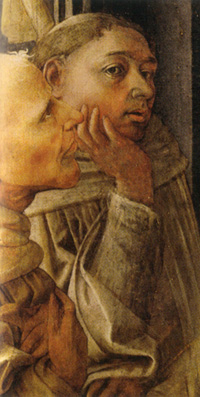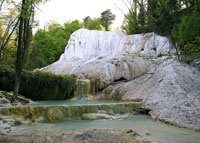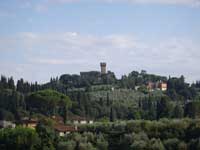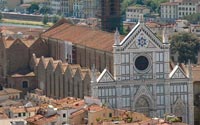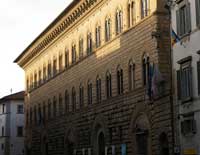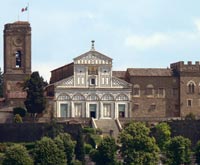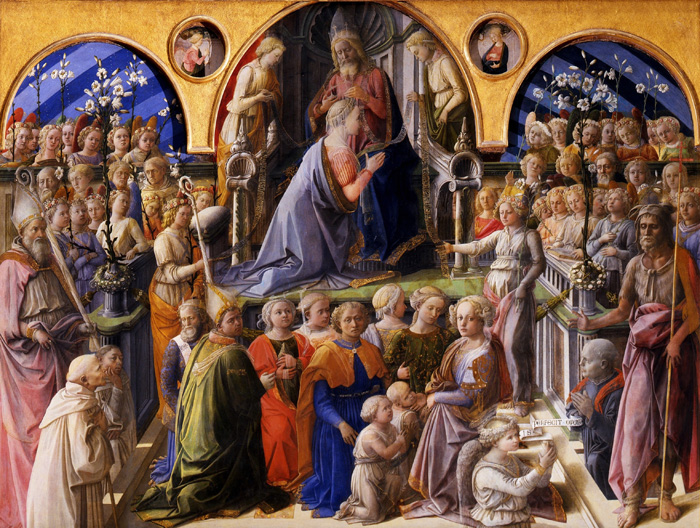 |
Fra Filippo Lippi, The Coronation of the Virgin, 1441-1447, 200 cm × 287 cm , Galleria degli Uffizi, Firenze |
Filippo Lippi | The Coronation of the Virgin |
| he Coronation of the Virgin (in Italian Incoronazione Maringhi) is a painting of theCoronation of the Virgin by the Italian Renaissance master Filippo Lippi, in the Uffizi, Florence. |
The work is composed of a single panel, divided into three sectors by the arches. At the sides of the central arch are two tondos, depicting the Angel of Annunciation and the Virgin. |
[1] |
||||
|
||||
This article incorporates material from the Wikipedia article Coronation of the Virgin (Filippo Lippi) published under the GNU Free Documentation License. [Sources: (2003). Galleria degli Uffizi. Rome].
|
||||
Holiday accomodation in Tuscany | Podere Santa Pia | Artist and writer's residency |
||||
Podere Santa Pia |
Podere Santa Pia, garden view, December |
Bagni San Filippo |
||
 |
||||
Torre del Gallo , near Florence |
Santa Croce, Firenze |
Siena, Duomo |
||
Palazzo Medici Riccardi, Florence |
Piazza della Santissima Annunziata in Florence |
San Miniato al Monte, Florence |
||

